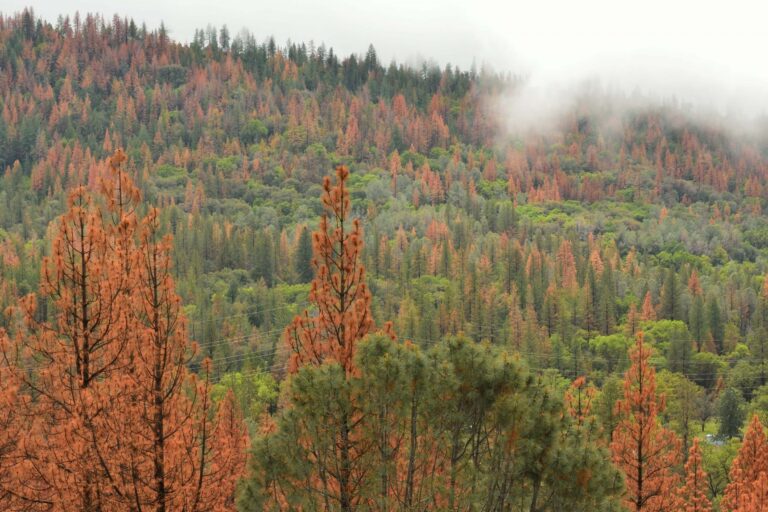Forests in the Sierra Nevada benefit all Californians―they provide timber, wildlife habitat, recreational landscapes, two-thirds of the state’s surface water, and other benefits. But their health is in decline from drought, insect infestation, changes in management practices, and overcrowding. These changes have raised the risk of catastrophic wildfire and tree die-off. Improving forest health will require thinning trees, which will make forests more resilient.
These were some of the observations from experts gathered in Sacramento to discuss a new PPIC report on improving forest management.
Van Butsic―an assistant cooperative extension specialist from the University of California, Berkeley, and a coauthor of the report—gave an overview of the crisis in forest health and solutions to it. A panel discussion followed, moderated by the PPIC Water Policy Center’s Jeffrey Mount. The panelists were David Edelson, Sierra Nevada project director at the Nature Conservancy; Barnie Gyant, deputy regional forester for resources for the Pacific Southwest Region of the US Forest Service; and Susie Kocher, natural resources advisor for the Central Sierra Region at the University of California Cooperative Extension.
“We looked at prescribed fire, managed wildfire, and mechanical thinning, and we realized these three treatments were actually effective,” said Butsic. “But they’re hard to use in California because of a complex management environment.”
Some essential takeaways from the event included:
- About two-thirds of the land in California’s headwaters is federally owned, making the federal government a key player in solving this crisis.
- Policy and budgets prioritize fire suppression over forest management. More than half of the US Forest Service budget is for fire suppression.
- Revenue-generating logging on forest management projects can make these projects financially viable.
- Treatments to thin forests can negatively affect species and habitat—but catastrophic wildfire is even more harmful.
- Climate change makes solving the crisis in our forests challenging but not impossible.
Jeff Mount wrapped up the event by noting that the forest health crisis presents an “exceptional opportunity” to stakeholders and decision makers. “We’re seeing an awakening and awareness at a level we’ve never experienced,” he said. “It’s an extraordinary moment that is not to be wasted.”
Read Improving the Health of California’s Headwater Forests (PPIC, September 2017)
Read California’s Water: Protecting Headwaters (from the California’s Water briefing kit, October 2016)
Visit the PPIC Water Policy Center’s drought resource page


